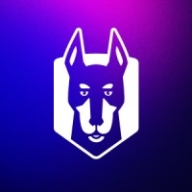

Sentry and Snyk are competing in application monitoring and security domains. Snyk often holds the advantage because of its comprehensive security features, deemed worthy of its investment.
Features: Sentry offers excellent integration capabilities, real-time error tracking, and user-friendly dashboards. Snyk provides vulnerability scanning, actionable advice for risk-prioritization, and secure open-source management.
Room for Improvement: Sentry could enhance its orchestration mechanisms and extend security features. Snyk might refine its UI to support more intuitive workflows and strengthen API documentation for custom use cases. Both could focus on further simplifying deployment.
Ease of Deployment and Customer Service: Sentry provides straightforward deployment with robust support infrastructure. Snyk supports a more guided deployment process with a dedicated support team to aid in maximizing the tool’s security potential.
Pricing and ROI: Sentry is cost-effective, delivering strong returns in performance monitoring with lower setup costs. Snyk, while pricier, justifies its cost by delivering significant security ROI through its extensive features. Sentry’s affordability appeals to those prioritizing cost, whereas Snyk appeals to security-focused enterprises.
We have not contacted their technical support because everything is easy to set up under Sentry.
We could understand the implementation of the product and other features without the need for human interaction.
Our long-standing association has ensured smooth communication, resulting in favorable support experiences and satisfactory issue resolution.
Their response time aligns with their SLA commitments.
We have not encountered any scalability issues with Sentry.
Snyk allows for scaling across large organizations, accommodating tens of thousands of applications and over 60,000 repositories.
Integrations or single sign-on capability with Microsoft would be beneficial for securing all assets.
As we are moving toward GenAI, we expect Snyk to leverage AI features to improve code scanning findings.
The inclusion of AI to remove false positives would be beneficial.
It lacks the ability to select branches on its Web UI, forcing users to rely on CLI or CI/CD for that functionality.
Compared to New Relic, it provides the necessary features at a cheaper cost, especially since we moved infrastructure monitoring to Azure.
After negotiations, we received a special package with a good price point.
Snyk is less expensive.
Snyk is recognized as the cheapest option we have evaluated.
Real-time error tracking helps our Quality Assurance team easily identify the root causes of problems or bugs and promptly inform the developers about specific issues.
Sentry provides real-time error tracking which is invaluable for identifying and resolving issues quickly.
At this time, I focus on finding and fixing bugs.
Snyk helps detect vulnerabilities before code moves to production, allowing for integration with DevOps and providing a shift-left advantage by identifying and fixing bugs before deployment.
Our integration of Snyk into GitHub allows us to automatically scan codebases and identify issues, which has improved efficiency.
The best feature of Snyk is the integration with our ticketing system, which is Jira.
| Product | Market Share (%) |
|---|---|
| Sentry | 5.8% |
| Snyk | 0.3% |
| Other | 93.9% |


| Company Size | Count |
|---|---|
| Small Business | 7 |
| Midsize Enterprise | 3 |
| Large Enterprise | 3 |
| Company Size | Count |
|---|---|
| Small Business | 20 |
| Midsize Enterprise | 9 |
| Large Enterprise | 21 |
Sentry is a robust error management system known for real-time error tracking and integration with tools like Slack, GitLab, and Jira, benefiting those seeking comprehensive application performance insights.
Sentry offers a seamless platform to monitor errors in both front-end and back-end applications, providing real-time alerts and comprehensive event log context. With its integration capabilities, teams effectively track application metrics and access performance data without direct production access, ensuring enhanced reliability. Sentry's features such as event grouping and code trace logs linked to Git repositories highlight its utility in maintaining application efficiency. Enhanced security and regular updates make it a preferred choice over competitors. Despite some requests for improvements in automation and UI enhancements, Sentry remains invaluable for error management and application performance monitoring.
What are the key features of Sentry?In industries like technology, Sentry is crucial for monitoring errors in web applications, offering real-time alerts and performance tracking. It is frequently used in ETL processes to detect failures without direct developer access, benefiting teams who manage large-scale applications and databases efficiently.
Snyk excels in integrating security within the development lifecycle, providing teams with an AI Trust Platform that combines speed with security efficiency, ensuring robust AI application development.
Snyk empowers developers with AI-ready engines offering broad coverage, accuracy, and speed essential for modern development. With AI-powered visibility and security, Snyk allows proactive threat prevention and swift threat remediation. The platform supports shifts toward LLM engineering and AI code analysis, enhancing security and development productivity. Snyk collaborates with GenAI coding assistants for improved productivity and AI application threat management. Platform extensibility supports evolving standards with API access and native integrations, ensuring comprehensive and seamless security embedding in development tools.
What are Snyk's standout features?Industries leverage Snyk for security in CI/CD pipelines by automating checks for dependency vulnerabilities and managing open-source licenses. Its Docker and Kubernetes scanning capabilities enhance container security, supporting a proactive security approach. Integrations with platforms like GitHub and Azure DevOps optimize implementation across diverse software environments.
We monitor all Application Performance Monitoring (APM) and Observability reviews to prevent fraudulent reviews and keep review quality high. We do not post reviews by company employees or direct competitors. We validate each review for authenticity via cross-reference with LinkedIn, and personal follow-up with the reviewer when necessary.